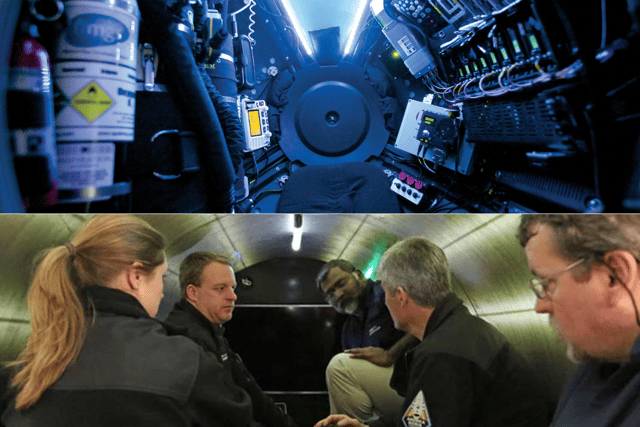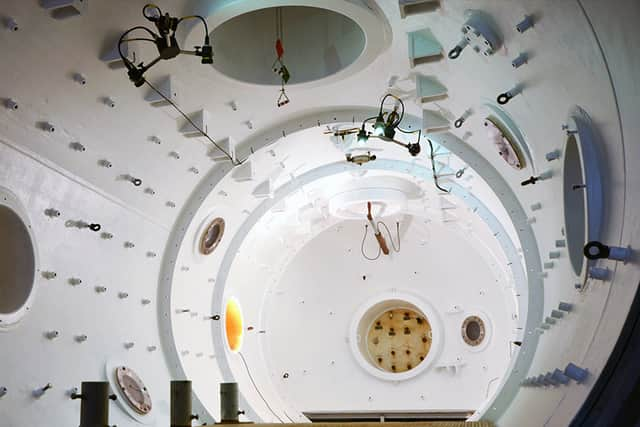Titan submersible; were there any engineering differences between Titan and Deepsea Challenger?
People in this article
and live on Freeview channel 276
As the remains of OceanGate's Titan submersible are raised from the Atlantic Ocean after a now confirmed “catastrophic implosion,” questions in the engineering community are being raised as to how such an event unfolded despite deep sea exploration being a regular scientific expedition.
Calls are being raised as to how rigorous the testing process was regarding the Titan, including the use of certain materials and if they would stand the fatigue after reaching the 12,000 foot depths of the Atlantic Ocean to navigate the wreckage of the RMS Titanic. Some have speculated that the theorised implosion at 9,000 feet could have been the wear and tear the Titan had experienced previously under such heavy atmospheric conditions with the materials they used.
Advertisement
Hide AdAdvertisement
Hide AdOthers have also questioned the integrity of the testing involved by OceanGate regarding the same fatigue that it had undertaken after previous trips. Regulations surrounding deep sea exploration include an exhaustive number of tests to ensure the safety and structural stability of a submersible for scientific purposes, let alone commercial travel to the wreckage.
Though jokes have been made about the use of a Logitech gaming console controller to navigate the Titan, many experts in the military field have come out and suggested that the use of a controller such as this one is not an uncommon practice when it comes to training and navigating vehicles and vessels remotely.
James Cameron, who had visited the site of the Titanic on numerous occasions, weighed in with his thoughts overnight regarding the fate of the Titan and concerns that he had, especially given his expertise with deep sea exploration through his expeditions aboard Deepsea Challenger.
So were there any fundamental differences between the engineering and construction of the Titan compared to that of the often-used Deepsea Challenger submersible used by James Cameron previously?
What were the differences between Titan and Deepsea Challenger?


The shape of the vessel
Advertisement
Hide AdAdvertisement
Hide AdThere was no real difference between the shape of the Titan compared to the shape of Cameron’s Deepsea Challenger. Both were spherical and elongated to avoid the drag of underwater currents at that level.
Though Cameron’s submersible did have a larger spherical window to allow more for visibility around the treacherous wreck of the Titanic, in comparison to the now often-seen porthole window of Titan.
The material used
The Deepsea Challenger is primarily constructed using a combination of high-strength steel and titanium. The crew compartment or sphere is made of forged steel, which provides the necessary strength and protection for the occupant in the extreme conditions of the deep sea.
The Titan was also constructed using titanium but opted for carbon fibre rather than high-strength steel and titanium. There was also no separate crew compartment inside the submersible, as opposed to the inside of the Deepsea Challenger.
The technology on board
Advertisement
Hide AdAdvertisement
Hide AdOceanGate’s specification list for the Titan states that it uses Sub C Imaging 4k Rayfin camera for capturing detailed footage of the underwater environment, a Teledyne 2D sonar for mapping the underwater topography and detecting objects, 40,000 lumens of external lights and a 2G Robotics laser scanner to help create detailed 3D maps of the underwater
The Titan also used Integrated Navigation System (INS) and Ultra-Short BaseLine (USBL) technology to assist in navigation and positioning.
Deepsea Challenger also has similar technology on board, however, one of the key differences between the two is the apparent lack of robotic arms Titan had compared to the vessel James Cameron used. There is a theory that in order to avoid the submersible being stuck in parts of the wreckage of the Titanic that robotic arms could provide more of a hindrance for OceanGate’s commercial expeditions.
What tests do deep sea submersibles undertake to ensure they are safe?
Tank Testing


Submersibles are first subjected to testing in large water tanks. These tanks simulated the underwater conditions, allowing engineers to evaluate a submersible's buoyancy, stability, and manoeuvrability. Tank testing helps identify any potential design flaws or performance issues that needed to be addressed before actual deep-sea dives.
Pressure Testing
Advertisement
Hide AdAdvertisement
Hide AdA submersible's structural integrity is thoroughly tested to ensure they can withstand the immense pressure at great depths. Pressure chambers are used to subject different components, including the crew compartment, to pressures equivalent to those experienced in the deep ocean. This testing ensures that a submersible could operate safely and protect its occupants under extreme pressure conditions.
Deep-water Testing
The Deepsea Challenger was taken on several deep-water test dives to progressively greater depths. These dives allowed the team to assess the submersible's performance in real-world conditions and verify its ability to handle the pressure, temperature, and other challenges of deep-sea environments. Data collected during these test dives helped refine and optimise the submersible design.
Safety Systems Testing
Various safety systems, such as life support systems, communication equipment, emergency procedures, and backup systems, were thoroughly tested to ensure they functioned reliably and could provide support in case of contingencies or emergencies during deep-sea dives. These tests aimed to ensure the safety of the crew and the submersible's ability to handle unforeseen situations.
Comment Guidelines
National World encourages reader discussion on our stories. User feedback, insights and back-and-forth exchanges add a rich layer of context to reporting. Please review our Community Guidelines before commenting.
